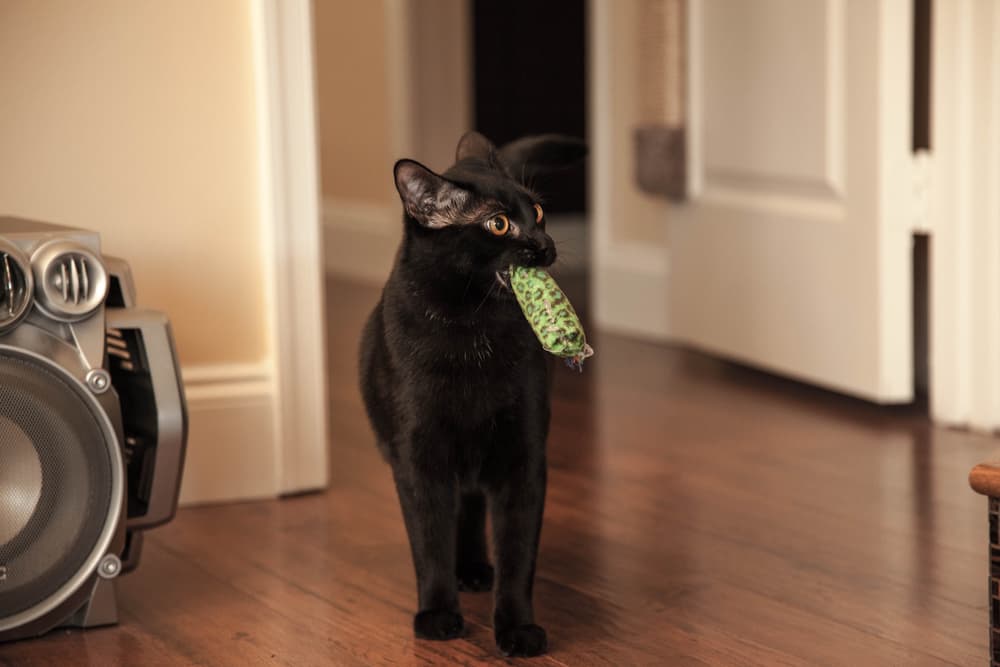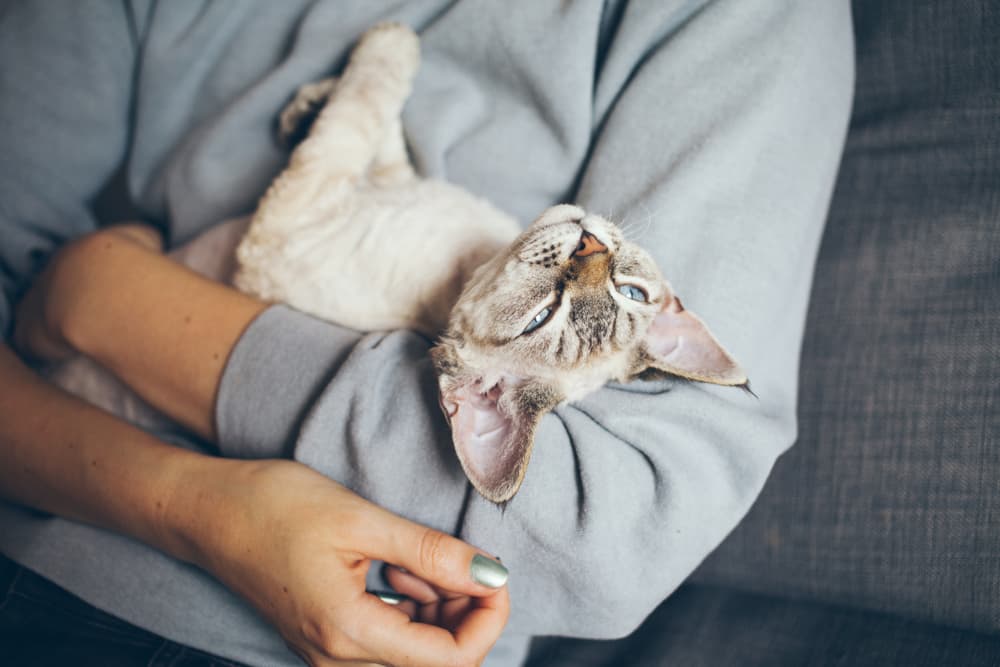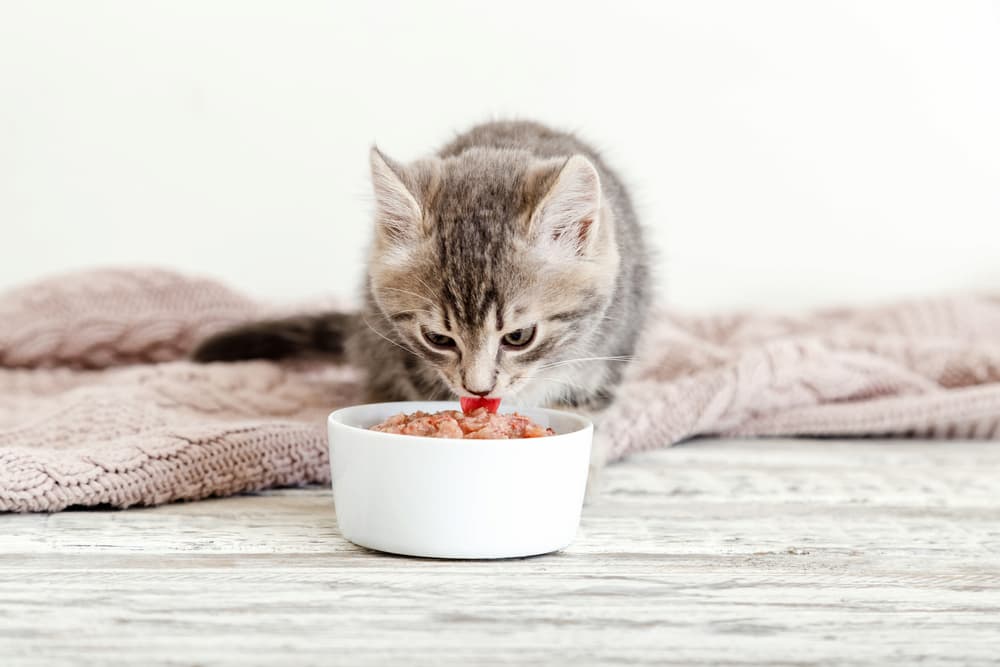How to Teach a Cat to Fetch

Your cat has a basket filled with toys and loves daily playtime. She chases her laser pointer, lunges after dangling feathers, and pounces on stuffed mice. So why not teach her how to fetch a ball?
Fetch is most commonly associated with dogs, but your favorite feline can learn to play, too.
“Some cats seem to have a natural tendency to fetch items for their owners,” says Dr. Pamela Perry, a veterinarian and behavior specialist at Cornell Feline Health Center.
Do Cats Play Fetch?

Some cats will play fetch, but others won’t. No two cats are alike. Just like some cats will walk on a leash but others will hiss at the idea of a harness, some cats will happily fetch balls while others will ignore all attempts to learn the game.
“Some cats seem to have a natural inclination for playing fetch, whereas others appear uninterested in retrieving objects,” says Perry.
In other words, can cats play fetch? Yes. Will all cats want to learn to play fetch? No.
Playing Fetch with a Cat: What You’ll Need

The list of what you’ll need for playing fetch with a cat is pretty simple:
- Your cat’s favorite toys
- Your feline’s favorite treats
A ball seems like the most obvious choice for a game of fetch, but when you are playing fetch with cats, it’s important to let them decide which object is most appealing.
“For any training, it is important to use a reward that motivates your cat,” says Perry.
Perry suggests looking for objects that are easy for your cat to pick up in their mouth and carry, such as balls, stuffed mice, and squeak toys. (Perry even had a cat who loved chasing corks, and would happily bound across the room after them.)
You’ll also want to have your cat’s favorite healthy treats on hand so you can dole out rewards during training.



“When she performs the desired behavior, immediately reward her with her favorite treat,” Perry says.
How to Teach a Cat to Play Fetch

Dogs seem to have a natural instinct to chase and return objects—and some cats do, too. But fetch doesn’t come as easily for many cats.
If you want to teach your cat to fetch, Perry suggests this step-by-step approach:
Step 1: Show your cat the ball or toy. When she touches it with her nose, offer a verbal cue like “yes,” then reward her with a treat. This is called “targeting” the ball.
Step 2: Repeat the above exercise several times so your cat associates the ball or toy with a reward. You’ll know she’s got it when she touches the ball and then looks to you for a treat.
Step 3: Start encouraging your cat to grab the ball with her mouth. You can dust it with catnip, a little bit of wet canned food, or another tasty treat to make it more appealing.
Step 4: When she grabs the ball with her mouth, say “yes” (or another verbal cue) and reward her. Repeat this exercise several times. The goal is for your cat to continue to associate the ball with positive reinforcement.
Step 5: Place the ball on the floor a few feet away from you. Wait until your cat picks up the ball, then offer the verbal cue and give her a treat.
Step 6: After several successful sessions, call your cat to you when she picks up the ball, and then reward her for bringing it back.
Step 7: Repeat several times. Before you know it, your cat will be dropping the ball in your lap and waiting for you to toss it across the room.
You can also use clicker training to teach your cat to fetch. The process is the same as above, but includes signaling the clicker when you offer a treat. Over time, the “click” sound becomes the reward for getting it right.
If your cat seems disinterested, try different toys or new treats to capture her attention.
And of course, be patient and positive while teaching your cat to fetch. It can take time to learn a new behavior, and your cat won’t be interested if she’s scolded.
Benefits of Playing Fetch with Cats

Teaching your cat to fetch is about more than bragging rights. Fetch is an interactive game that engages your cat’s sense of smell, sight, touch, and taste; it also allows indoor cats to exercise their natural prey drive.
Given that almost 60 percent of cats are overweight or obese, games such as fetch offer much-needed exercise that could help your fluffy feline slim down and reduce the risk for health conditions including arthritis, diabetes, and cardiovascular disease.
Additionally, fetch provides mental stimulation, and can also strengthen the bond between you and your pet, adds Perry.
So what are you waiting for? Go fetch!








